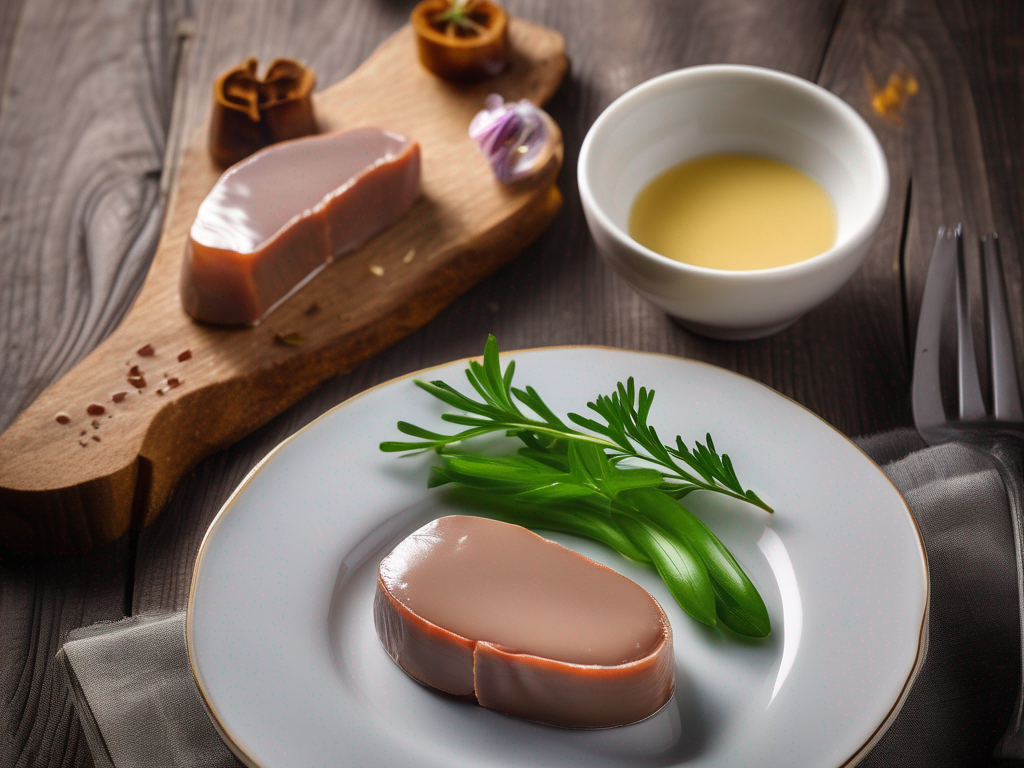
How to Properly Store Goose Liver Pâté to Extend its Shelf Life
Get Your Free Food Safety Cheat Sheet
30 most common foods with instant answers. Print it and stick it on your fridge—completely free!
How to Properly Store Goose Liver Pâté to Extend its Shelf Life
Goose liver pâté, also known as foie gras, is a delicacy enjoyed by many for its rich and decadent flavor. Whether you have made your own batch of pâté or purchased it from a gourmet store, it's essential to store it properly to maintain its quality and safety. In this blog post, we will discuss the best way to store goose liver pâté to extend its shelf life. (Goose liver p t)
Understanding Goose Liver Pâté
Before diving into storage methods, let's briefly discuss what goose liver pâté is and why it requires special attention when it comes to storage:
What is Goose Liver Pâté?
- Goose liver pâté is a creamy spread made from the fattened liver of a goose or duck.
- It is a high-fat product that is susceptible to spoilage if not stored correctly.
- Goose liver pâté is often seasoned with herbs, spices, and sometimes alcohol, enhancing its flavor profile.
Now that we have a basic understanding of goose liver pâté, let's explore the best practices for storing this delicacy.
Best Practices for Storing Goose Liver Pâté
Proper storage is crucial to maintaining the quality and safety of goose liver pâté. Follow these tips to extend the shelf life of your pâté:
1. Refrigeration is Key
- Store in the Refrigerator: Goose liver pâté should always be stored in the refrigerator to slow down the growth of bacteria.
- Use an Airtight Container: Transfer the pâté into an airtight container to prevent exposure to air and potential contaminants.
2. Temperature Control
- Maintain Consistent Temperature: Keep the refrigerator temperature at 40°F (4°C) or below to ensure the pâté stays fresh.
- Avoid Temperature Fluctuations: Fluctuations in temperature can accelerate spoilage, so avoid leaving the pâté out at room temperature for extended periods.
3. Proper Handling
- Use Clean Utensils: When serving the pâté, use clean utensils to prevent cross-contamination.
- Seal Tightly: After each use, make sure to seal the container tightly to preserve freshness.
4. Labeling and Rotation
- Label the Container: Clearly label the container with the date when the pâté was stored to track its freshness.
- Follow FIFO Rule: Follow the "first in, first out" rule to ensure you use the oldest pâté first before moving on to a newer batch.
5. Freezing for Long-Term Storage
- Freeze in Small Portions: If you won't consume the pâté within a few days, consider freezing it in small portions to maintain its quality.
- Thawing: Thaw the frozen pâté in the refrigerator overnight for best results.
By following these storage guidelines, you can enjoy your goose liver pâté for an extended period while ensuring its safety and quality.
Conclusion
Proper storage is essential when it comes to extending the shelf life of goose liver pâté. By refrigerating the pâté in an airtight container, maintaining consistent temperature control, handling it with care, labeling and rotating the stock, and considering freezing for long-term storage, you can savor this luxurious delicacy without compromising on taste or safety. Remember to always follow food safety guidelines and trust your senses – if the pâté looks or smells off, it's best to discard it. Enjoy your goose liver pâté responsibly and indulge in its decadent flavors! (Goose liver p t)
Authoritative Food Safety References
These agencies and university labs inform every tip and health precaution we publish.
USDA FoodKeeper – Cold Storage Guidelines
Official refrigerator, freezer, and pantry timelines maintained by the U.S. Department of Agriculture.
Visit USDA FoodKeeperFDA Produce Safety Rule & Grower Guidance
Field-to-fridge handling practices that prevent contamination of fruits, vegetables, and leafy greens.
Visit FDA Produce SafetyCDC Foodborne Illness Prevention Hub
Surveillance-backed guidance on pathogens, symptoms, and steps to reduce foodborne illness risk.
Visit CDC Food SafetyUC Davis Postharvest Technology Center
University research detailing optimal storage atmospheres for produce after harvest.
Visit UC Davis PostharvestPenn State Extension – Home Food Preservation & Safety
Peer-reviewed extension bulletins on safe canning, chilling, and reheating practices.
Visit Penn State ExtensionGet Your Free Food Safety Cheat Sheet
30 most common foods with instant answers. Print it and stick it on your fridge—completely free! Want more? Upgrade to the complete guide with 70+ foods.
Scan your food directly and get instant safety info using our AI-powered camera feature.